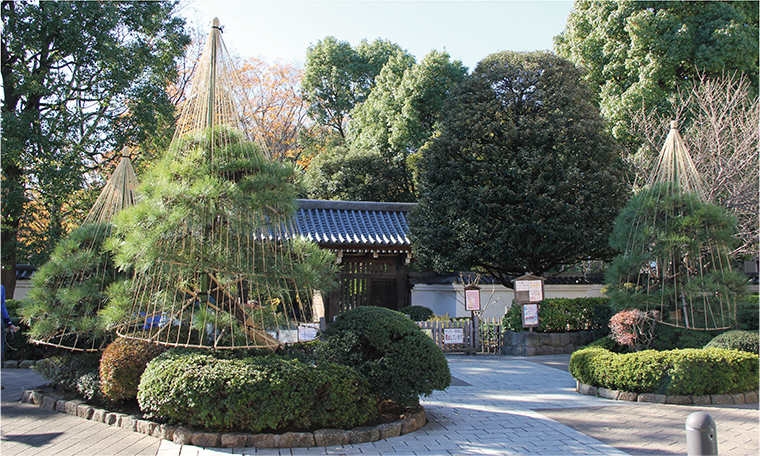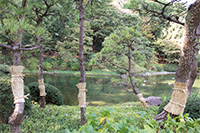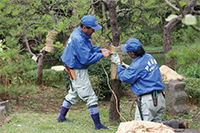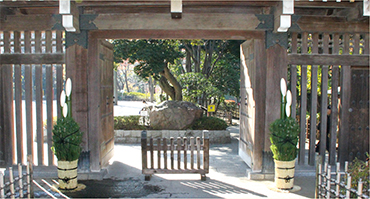
Winter Preparations has begun outside |
As the year draws to an end and autumn deepens towards winter,“ winter preparations” begin in full earnest. Cold-weather clothing is brought out and the kotatsu table and room heater play a central role in the home until spring. |
| But there is also a tradition of winter preparations outside as well, known as Yuki-tsuri and Komo-maki. The former involves the use of ropes and/or bamboo to provide support to branches so they do not snap under the weight of wet snow. Yuki-tsuri is seen at many places in Tohoku or Hokuriku regions. While the latter is a straw mat wrapped around pine and cedar trunks about one to two meters off the ground. Many pest insects winter in fallen leaves, but will instead choose to stay in the matting as they make their way down the trunk of the tree. Come spring, the mat is removed and burned to kill off the dormant pests. However, it has become less common. |  |
 |
You can enjoy these traditional outdoor winter traditions in Shinagawa at locations such as Ikedayama Koen Park (5-4 Higashi- Gotanda) and Togoshi Koen Park (2-1 Yutakacho), perhaps as part of a nice stroll. |
| 【The Essential Decorations of the Japanese New Year】 Once “winter preparations” is completed, attentions shift to New Year preparations. Toshigami-sama, the God of the incoming year, is said to visit homes for New Year’s. The invitation for this visit are the placement of a Kadomatsu (decorative matsu pines placed in front of the gate) and a Shimenawa (straw rope) as well as Shimekazari that signifies a clean place. Kagami-mochi (round rice cake) is also placed in the home as an offering to the visiting god. In older times, a full Kadomatsu would be placed on both sides of the gate, but in recent years this practice is often simplified as pine branches wrapped with washi paper and decorative paper cord known as Mizuhiki, which is tied to the gateposts. Condominiumdwellers usually choose to forego Kadomatsu, instead placing a simple Shimekazari in the entrance of their home or on the door. Matsu has long been a symbol of longevity and prosperity in China and is similar to the Japanese word matsuru, which means “to worship,” making this tree quite auspicious and an indispensable part of the Japanese New Year.
|
 Copyright (C) 2015 Shinagawa City. All rights reserved. |
